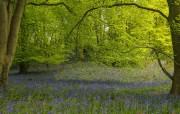Fife is blessed with beautiful parks and gardens to visit...and who doesn't love being surrounded by nature and flowers.
Cambo Gardens, Kingsbarns
Cambo Gardens features a stunning walled garden dating back to the early 1800s which provides the perfect combination of historic and contemporary gardening. “Our natural, informal planting style has transformed this 2.5 acre walled garden into a beautiful, romantic place,” explains Katherine Taylor, head gardener at Cambo Gardens.
A burn runs through the middle of the walled garden, with a wild flower meadow on either bank, and there are many wonderful areas to wander around, including the cut flower garden, huge herbaceous borders and themed areas such as South African and woodland plantings. “We also have an edible garden where we grow the produce for Cambo Garden’s Café,” adds Katherine.
Sheltered from the North Sea winds, the walled garden is home to an astonishing array of plants, with breathtaking displays by alliums, lilacs, herbaceous plants, shrubs and over 200 species of old-fashioned roses.
“During spring and summer, the walled garden bursts with colour and fragrance and is a magnet for butterflies and bees,” continues Katherine.
Cambo Gardens also features Scotland's only prairie garden - with herbaceous plants from the plains of North America - a potager garden and a winter garden, home to a National Snowdrop Collection with over 200 varieties of single and double-flowered snowdrops.
"In the early months of the year, Cambo's woodlands are carpeted with snowdrops, adding a blanket of white to the forest floor,” reveals Katherine. "As the snowdrops fade away, daffodils and primroses take over, adding bright dashes of yellow to Cambo's woodland walks.
“There’s almost always something in bloom at Cambo Gardens.”
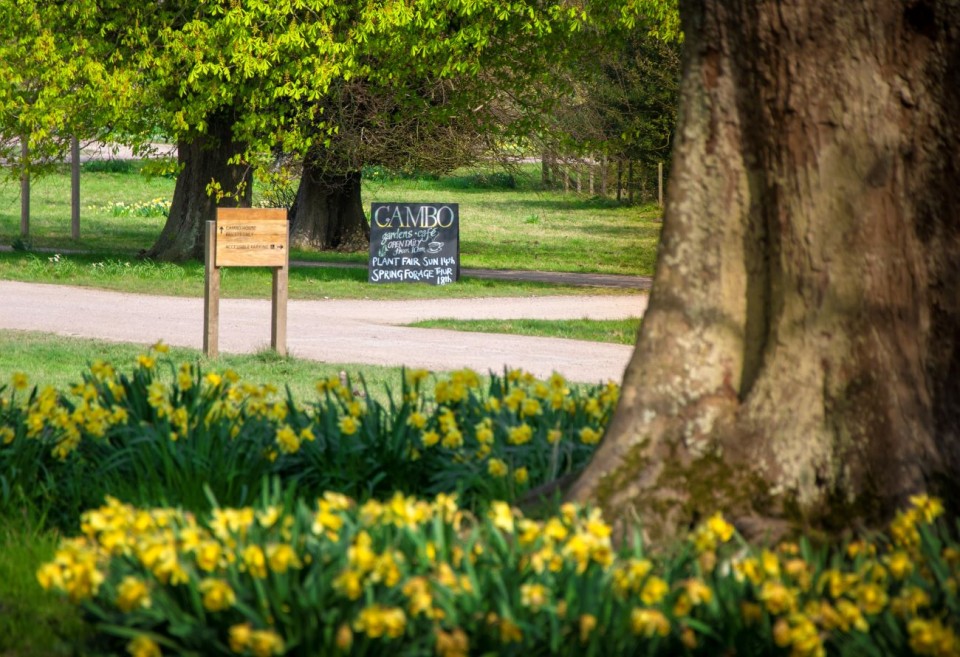
Falkland Palace Gardens, Falkland
Once home to Mary Queen of Scots, Falkland Palace’s beautiful gardens have retained the splendour expected of a royal residence’s surroundings. However, as head gardener Ewan Crighton reveals, the gardens are very different from how they would have looked when the Stuarts ruled Scotland.
“Apart from lawned areas, the grounds of the Palace would largely have been devoted to growing vegetables, fruit and herbs for the Royal Court,” Ewan explains.
However, one aspect of the National Trust property’s grounds that hasn’t changed since Mary Queen of Scots’ time is the spectacular view of Falkland Hill. “Seen from the gardens at the Palace, Falkland Hill has an almost magical quality,” says Ewan. “The hill changes dramatically depending on the season and the weather but it always provides the perfect backdrop, whether covered in snow or bathed in sun.”
There are over nine acres of gardens at Falkland Palace, ranging from the orchard and wildflower meadow to the main gardens, a lot of which are arts and crafts-styled. Having been dug up to grow potatoes for the War Effort, in the late 1940s, celebrated garden designer Percy Cane was asked to recreate the gardens at Falkland Palace.
“Percy Cane designed a spectacular garden landscape, with geometric borders and sweeping flower beds containing all sizes, shapes and colours of plants, shrubs and trees, outlined by geometric borders and lawned walkways,” says Ewan.
“I’m very proud of our Percy Cane Beds, which the gardening team are successfully returning to their original splendour, with swathes of irises, geraniums, peonies and asters.”
The gardens at Falkland Palace are open from March until the end of October and although Ewan stresses that any time during the rest of the year is good for visiting, he does have a favourite month. “July’s extra-beautiful,” he says. “That’s when a crescendo of colour explodes across Falkland Palace Gardens.”
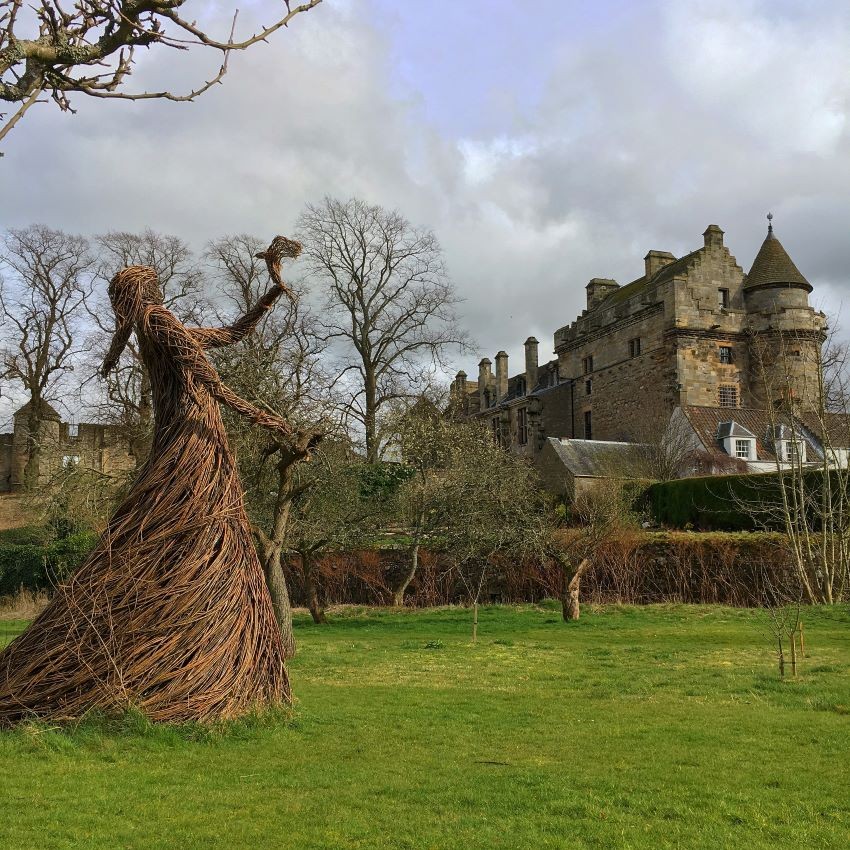
Pittencrieff Park, Dunfermline
Pittencrieff Park in Dunfermline was given to the city in 1903 by the world-famous philanthropist Andrew Carnegie, who wanted to bring ‘sweetness and light’ to the people of his hometown. With 750,000 visitors every year, the great benefactor‘s wish has come true.
“Pittencrieff Park’s for everybody,” says Mike Wallace, who, as chargehand at Fife Council, is responsible for maintaining the park, including its flower beds, rose gardens, glasshouses, waterfalls, woodland areas, paths and playgrounds. “It’s a beautiful place to visit, it’s close to the city centre and there’s so much for everyone, of all ages, to see and do – the park even has its own resident peacocks.”
In addition, Pittencrieff Park has a varied and colourful selection of flowers and shrubs – and a lot of trees, including the oak tree planted by Andrew Carnegie over 100 years ago and several unusual species. “We have a handkerchief tree, money puzzle trees, giant sequoias and a katsura tree, which smells of candyfloss,” says Mike. “In addition, we recently planted a bamboo garden.”
In 2022, Pittencrieff Park was named one of the country’s top parks in the UK’s Favourite Parks Award. “As well as being recognition of the hard work and commitment of Pittencrieff’s team of gardeners, this award was also a great accolade for the many volunteers who help keep the park looking at its very best all year round,” continues Mike. “We’re very lucky to have a park like this in the centre of Dunfermline.”
May is a wonderful time to visit to see the beautiful cherry blossom.
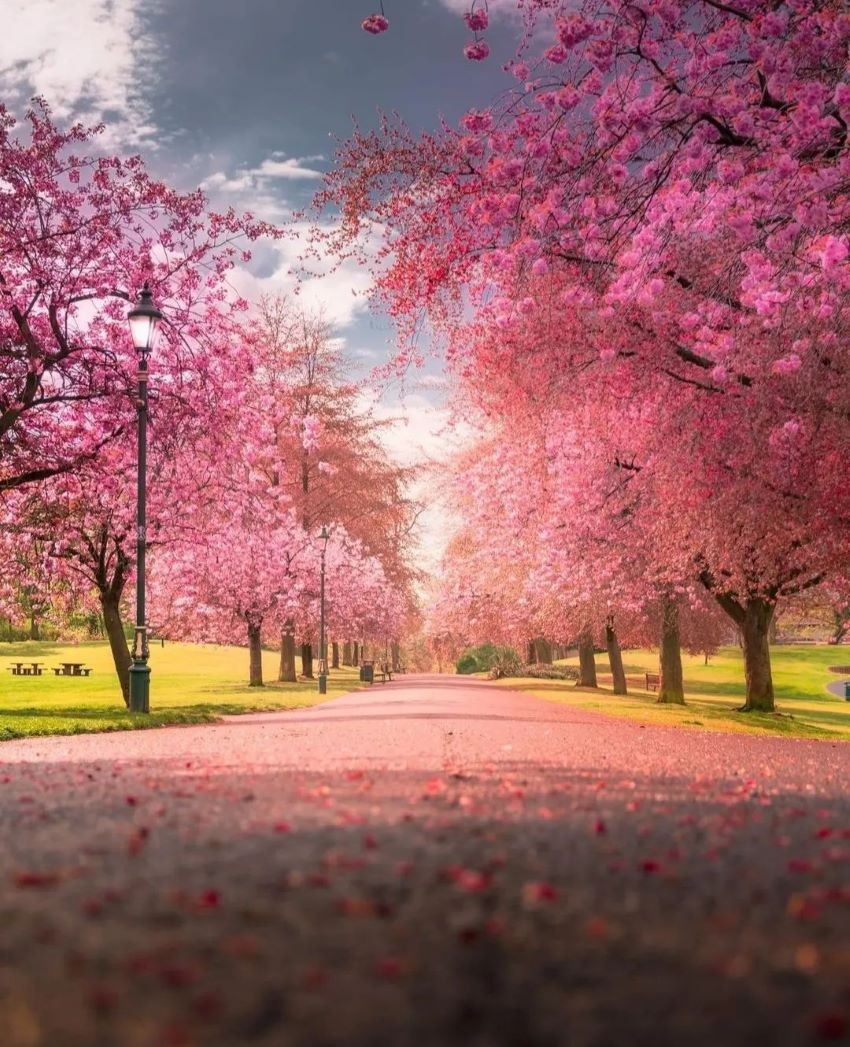
South Flisk, St Andrews
“South Flisk is a fabulous place to live – and to garden,” says Julia Young, whose home is in the village of Blebo Crags, high in the hills overlooking St Andrews. “Since I stopped working fulltime fifteen years ago, I’ve devoted my time to making the gardens at my home as beautiful as possible.”
Julia’s front garden is a traditional cottage garden while the back garden is a spectacular combination of lush woodlands, bright colours and gently cultivated wilderness, all dominated by a flooded sandstone quarry, where giant carp swim, frogs jump and herons come in search of their lunch.
“South Flisk also has regular visits from deer, badgers, bats and a very handsome otter, as well as a fabulous choice of birdlife,” adds Julia. “At times, I feel as though I’m watching a wildlife documentary.”
As part of her long-term gardening plans for South Flisk, Julia has planted over 40 trees and created several well-defined areas, such as the steep-sided, flower-filled glen, the spring garden and her latest project, a bog garden. “The older I get, the more I seem to take on,” laughs Julia, who is helped in her monumental task by her husband, George, who runs the well-established St Andrews Pottery there.
South Flisk is part of the Scotland’s Gardens Scheme, which helps gardeners raise money for charity by welcoming members of the public into their gardens. “South Flisk is open by arrangement from April, when it’s carpeted by primroses, bluebells and daffodils, until the end of June, when our roses, woodland flowers and some of our many rhododendrons are at their peak,” says Julia.
“I really enjoy showing people around my garden and swapping tips with other gardeners. I’ve learnt about 80% of my gardening knowledge from talking to other gardeners.”
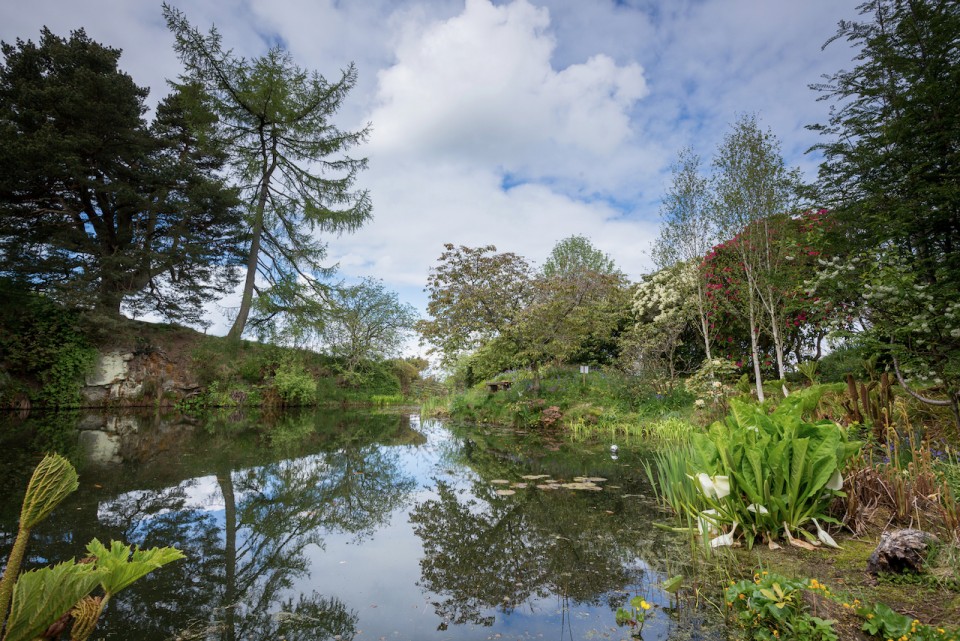
The Tower, Newport-on-Tay
After over thirty years of hard work by Peter and Angela Davey, the Edwardian garden at The Tower has been magnificently restored – and recently appeared in Channel 4’s Garden of the Year 2022. “It’s been quite a project,” smiles Peter.
Angela explains that, when they first stated restoring the garden, they’d no idea what lay beneath their feet. “Our first discovery was a huge granite grotto, which then revealed a disused waterfall feature. That was a very exciting find!”
Angela and Peter have also restored the original paths which meander round The Tower’s woodland area. “By reducing the size of the lawns, we’ve created new borders and flower beds,” continues Angela. “We’ve also added four new ponds with a stream running between them, as well as extra rockery areas and raised beds for vegetables, using granite sets.”
The Tower is located on a steep hillside and has stunning views across and along the River Tay. However, the steepness of the ground brings its own challenges. “We call it ‘Extreme Gardening’,” laughs Angela. “There are many parts of the garden where you have to kneel or hold onto a tree while weeding or planting as the ground’s so steep.”
The garden at The Tower bursts into life every spring, thanks to the thousands of bulbs Angela and Peter have planted, along with hellebores, magnolia and coreopsis, followed by peonies, allium, rhododendrons, azaleas and camellia. “The colour continues all summer and well into autumn,” explains Peter. “We spend most of our free time looking after our garden but the end result is incredibly rewarding.”
As part of Scotland’s Gardens Scheme The Tower’s garden is open to the public, by arrangement, from April to October.
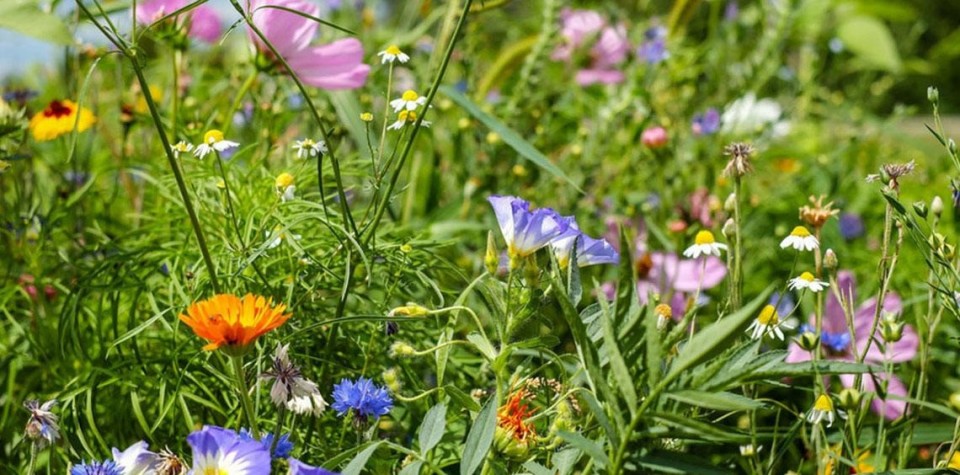
Also don't miss St Andrews Botanic Garden right in the heart of historic St Andrews. It's well worth a visit and makes for a lovely day out.



